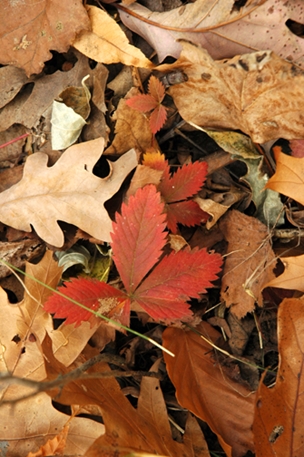Good to mulch in fall

Green thumbs up
to blanketing the garden with mulch in fall. It's customary to do
this work in spring but there are good reasons to follow Nature's
lead in applying all that organic matter in fall. (How much mulch
will you need? Check the Mulch Calculator.) We count seven
advantages but just three drawbacks:
Positive aspects:
- It's a damper not only on weed seeds that would germinate in
spring but to the "winter weeds" as well -- creeping speedwell,
tall rocket and others.
- It provides some protection to plants against the big
temperature swings that can kill roots in bare soil as the season
changes.
Follow their lead: Northern botanical gardens mulch in fall
(Here, Olbrich Botanical Garden in Madison, Wisconsin)

- Mulch will be there to cushion the soil against the pummeling
of winter rain. Those icy drops can leave a layer of
water-repelling clay on the surface of what had been crumbly
soil.
- We gardeners have more time available in fall and we're not
racing against plants on the rise.
- We'll be able to sit back and enjoy the emerging show in
spring, with a good portion of the work already done.
- We don't have to be so careful in fall as in spring, to avoid
covering perennials' crowns. Young shoots that can be overheated or
rotted by trapped moisture if covered after they begin growth in
spring, are not there to be hurt in fall. When those shoots do
develop in spring they'll do it under cover with every cell
receiving cues from day one that say, "Stay tough, you're still
underground."
- There is a lot of free mulch around in fall. A layer of autumn
leaves is fine mulch on its own but if that look doesn't please the
eye they can be the underlayer that allows us to use much less
purchased mulch as a veneer layer -- we can get away with less that
an inch of shredded bark over the top of leaves.
Below: Sometimes we shred the leaves before using them as
mulch in fall but most of the time we rake 'em up and toss 'em
on. Does it hurt the perennials to have 5 or 6 inches of
leaves over them in fall? In 30 years of doing this we've seen far
more good come of it than bad. The bad: Sometimes in spring we have
to poke at hard clumps of leaves that are rising like hats as
plants beneath push up. Most of the time, only 1-2 inches of leafy
matter remains as mulch by spring and that's a perfect
number.



Negatives:
- There is some chance that fresh mulch in fall will provide
homes for voles -- shrub- and tree bark chomping meadow mice. The
rodents won't appear just because there is mulch, however. It's an
issue to be taken into serious consideration where vole problems
have already existed during the year. Traps or poison baits are
necessary there, early mulch or not.
- If we don't get all our dividing and moving around done at this
end of the season but we do spread mulch in fall, the mulch will be
in the way and need raking-out in spring around the plants still
"on deck" for division.
- The mulch may break down and have to be topped up in spring.
But then, we don't really count it as a bad thing that
gentle natural processes churned some extra organic matter into the
soil!
Leafy part of fall clean up
Below, left: One day in early October we realize "it's about
time to wind down."
Below, right: So by mid-October we come to the time to yank
out, divide, and replace.


Below, left: However much organic matter we take out -- such
as a wheelbarrow full of daylilies and their roots -- we put back
that much compost. This is worm castings from a bait worm
company.
Below, right: This creates some bare space.


We're happy if, when we finish in fall, every bare space has
leaves on it, and all the plants, too.
For more about what we do when in fall, download our
presentation, The Art of Fall Garden
Clean-up.

